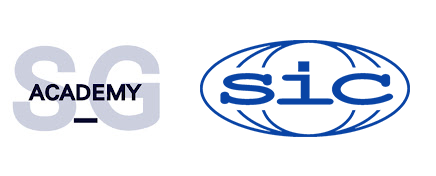Practices for maintaining and improving quality management systems for medical device manufacturers in compliance with the requirements of ISO 13485.
This course is designed to provide medical device manufacturers with practical knowledge and skills for maintaining and improving quality management systems in compliance with ISO 13485 requirements. Participants will learn the fundamental principles of ISO 13485, methods for conducting internal audits, risk and opportunity analysis, and tools for continuous process improvement. The course covers industry-specific requirements, including document control, product quality management, and regulatory compliance.
Special attention is given to developing strategic thinking and quality management skills at the senior management level. Participants will learn to integrate ISO 13485 requirements into business strategies, enhance organizational competitiveness and efficiency, and ensure the high quality and safety of medical devices. Practical exercises and real-life case studies will enable top managers to apply acquired knowledge in practice, supporting their professional development and successful company management.
Duration
42 hours
Language
English/Ukrainian
Format
100% online
Objectives
The purpose of the course is to provide top management of medical device manufacturers with the knowledge and skills necessary for the effective implementation, maintenance, and improvement of quality management systems in accordance with ISO 13485 requirements. Participants will learn to understand and integrate the standard’s requirements into strategic business processes, minimize risks, enhance organizational efficiency, and ensure high quality and safety of medical devices. The course focuses on developing competencies that will help achieve high-quality standards, comply with regulatory requirements, and strengthen competitive positions in the medical device market.
Target audience
- Senior management and executives of medical device manufacturers: To acquire strategic knowledge and skills in quality management in accordance with ISO 13485.
- Quality management system coordinators: To enhance and implement quality systems in the medical sector.
- Internal auditors and quality specialists: To conduct audits and process analysis to ensure compliance with standards.
- Engineers and production managers of medical devices: To optimize manufacturing processes and improve efficiency.
- Professionals involved in the development and testing of medical devices: To ensure high standards of product quality and safety.
- Any other specialists seeking to enhance their knowledge in quality management and compliance with ISO 13485.
Document on completion
Top manager qualification certificate, specialization «Best business management practices in accordance with the requirements of the international standard ISO 13485:2016», listed in the SIC international register
Thematic plan
The course program includes two modules.
The program is designed for 42 hours, including time for studying theoretical material and taking tests.
After completion of each module, the listener is being tested.
Objectives
Module 1 The practice of implementing, maintaining and improving the quality management system for medical device manufacturers in accordance with the requirements of ISO 13485:2016
Number of hours
|
1.1 1.2 |
Introduction Scope |
1 0.5 |
|
1.3 |
Terms and definitions |
1,5 |
|
1.4 |
Quality management system |
1,5 |
|
1.5 |
Management commitment |
2 |
|
1.6 |
Resource management |
2.5 |
|
1.7 |
Product realization |
6 |
|
1.8 |
Measurement, analysis and improvement |
3 |
|
|
Testing |
1 |
Module 2 Tools and approaches for the development and continuous improvement of the business management system
Number of hours
| 1.1 | Understanding the organization and its context. Auxiliary tools | 3 |
| 1.2 | Understanding the needs and expectations of stakeholders | 1 |
| 1.3 | FSMS scope and processes | 0,5 |
| 1.4 | Leadership in business | 2 |
| 1.5 | Policy and strategy | 1 |
| 1.6 | Functions, responsibilities, and authorities | 1 |
| 1.7 | Actions to treat risks and implement opportunities | 2 |
| 1.8 | FSMS objectives | 1 |
| 1.9 | Planning changes | 1 |
| 1.10 | Resources. Efficient use | 1,5 |
| 1.11 | Documentation | 1 |
| 1.12 | Operational planning and control over current activities | 1 |
| 1.13 | Internal audits | 1 |
| 1.14 | Management systems analysis | 2 |
| 1.15 | Nonconformities and corrective actions | 1 |
| 1.16 | Improvement | 2 |
| Testing | 1 |
